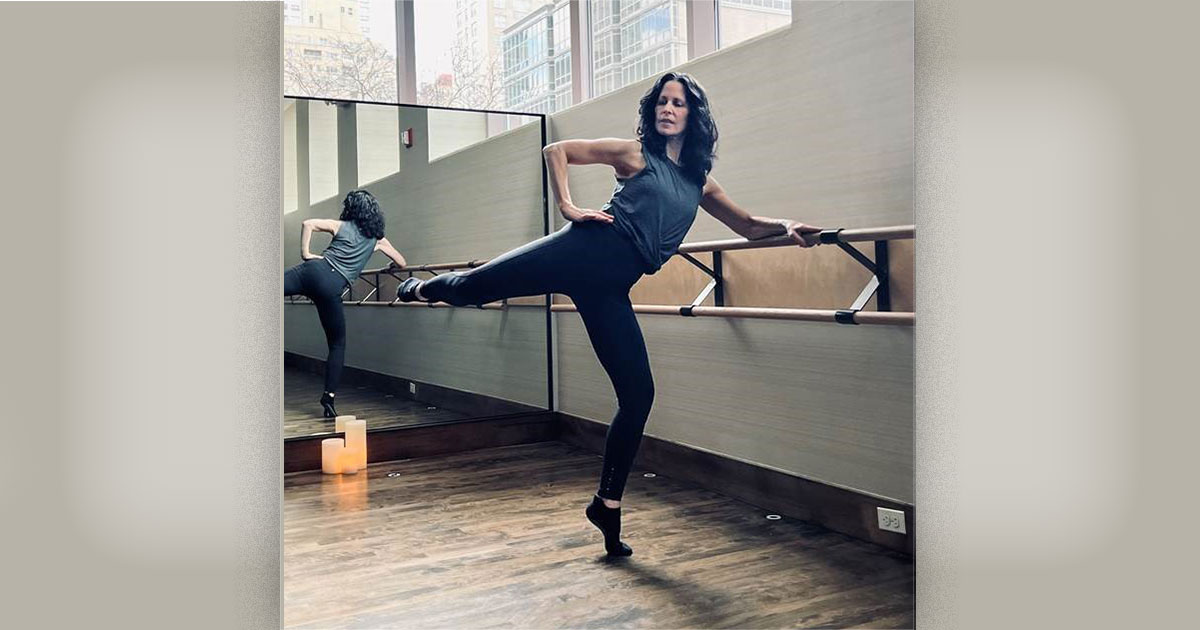A Guide to Exercise after Total Hip Replacement
Advice to improve your movement, fitness, and overall health from the world's #1 in orthopedics.
If a hip replacement surgery is in your future, you may be wondering about the recovery period. What can your body – and its newest addition – safely tolerate? How long will it take before you’re back up and (literally) running? What’s normal and what’s not?

“The biggest priority for the first two, if not four, weeks is recovery,” says HSS physical therapist Meghan Lamothe, PT, DPT, OCS, ATC. “You don’t need to be doing anything besides walking and the functional exercises you’ve been learning in physical therapy.”
For physical therapists, job number one for their patients recovering from hip replacement is strengthening the gluteus maximus muscles in the buttocks. “We need the glutes to be very strong,” Lamothe says. “They protect the hip and keep it stable, which helps the joint last as long as possible.”
The exercises you’ll perform in PT are chosen specifically to strengthen the glutes – sitting up from a chair, climbing stairs, and lowering yourself to the floor and rising up again.
Improving Balance After Hip Replacement
Physical therapists also focus on improving balance and proprioception, which is the term for how the body senses its own movement and position.
“Every joint in the body has mechanoreceptors that tell your brain where your body is in space,” Lamothe explains. But replacement hips lack those receptors, which means the brain must be trained to rely on other cues to figure out where the affected limb is relative to the rest of the body.
“That process can be very challenging,” Lamothe says. “You have to develop new pathways in the nervous system to improve your sense of balance and positioning. You can’t go back to playing sports if you can’t perceive where your center of mass is.”
Good ways to improve balance include standing on one leg, going up and down stairs, and even walking on flat ground. “Walking is really a balance exercise because it involves the dynamic shifting of weight back and forth,” Lamothe says. Your physical therapist also may have you perform certain actions with your eyes closed, which helps with proprioception.
Dealing with Pain and Stiffness
How can you tell when lingering discomfort or stiffness after surgery is normal and when it signals a problem? A rule of thumb, Lamothe says, is if sharp pain appears suddenly or persists, or if it’s accompanied by an increase in swelling, you’ve probably overtaxed the new joint and need to take a break.
“It’s really important with resuming any exercise that everything is gradual,” she says. “You shouldn’t go from walking one block to walking 20, or from running one mile to running five. You have to build it up slowly.”
How long that takes is pretty variable, she adds. “The neurological system is very adaptable and can respond to change quickly, but it depends on how much damage a person had in the joint before surgery. A good goal is at six weeks, being able to maintain single-leg balance for 10 seconds. This reduces the risk of falls.”
Once that first phase of recovery is complete, typically four to six weeks after surgery, it’s time to resume a workout regimen (or start one).
Best Types of Exercise After Total Hip Replacement
Cardiovascular fitness is critical for overall health, and particularly for people recovering from joint procedures, Lamothe says. Exercise machines such as stationary bikes, elliptical trainers and treadmills are all excellent options for people who’ve recently had hip replacement surgery because they can provide a good workout for the heart and lungs while being relatively low-impact. Similarly, swimming, Pilates, yoga and weight machines – but not free weights – also are good choices.
If you opt for a class, Lamothe says, “let the instructor know that you’ve had a hip replacement however long ago and they can make modifications as needed.”
As for more vigorous activities – tennis, running, basketball, skiing – those are all possible for most people who’ve had a hip replacement, but not in the near term. The earliest your surgeon is likely to approve a return to sports is likely to be 12 weeks after surgery, and you’ll need to wait for that clearance, Lamothe says.
However, she cautions, don’t be too daring even after you’re cleared for full activity. “You shouldn't be taking up an activity you’ve never done before or something you used to do but no longer do,” she says. “The more demand you put on the replacement, the less time it will last.”
Published 3/30/2023




